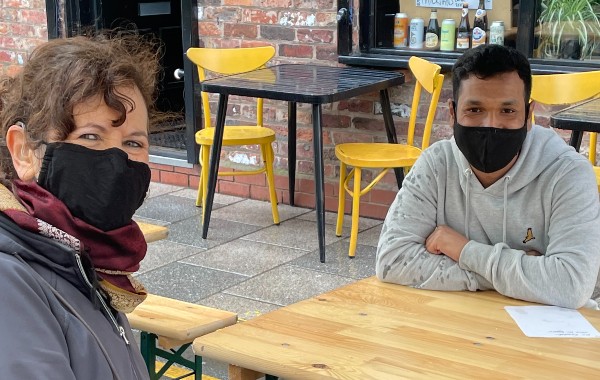
All Result CIC’s new coaching relationships since March 2020 have all had to start and develop online. In our partnership with Koreo and the Community Leadership Academy, the coaching relationships have been over a year or more. One of Jane’s clients from that programme suggested it would be good to meet for the final coaching session and when lockdown restrictions were due to ease in late May. After 8 sessions on a screen starting in the summer of 2020, what would it be like to work face to face? Here are 3 main differences Jane observed:
1: It’s harder than you expect
Building in risk assessment before meeting a person is not something that most of us are used to. Instead of just agreeing on a time and place, we now have to check things such as how well protected we are (have we all had both jabs?) the weather forecast (if meeting outside), the unpredictable opening times of beleaguered cafes, and also the level of risk to others in our households.
Initially, we planned to meet in a small local café at a quiet time, but closer to the agreed date news started circulating about the variant of the virus first recognised in India and had begun to appear not far away from us in Bolton. As one of us had a more vulnerable family member, we switched to meeting outdoors. Then the North West did its thing with the weather…

2. Meeting face to face involves re-assessment
When you are used to an orderly 2D environment on a screen where everyone appears as a head and shoulders lined up on video it can be disconcerting to be in the presence of the whole person. Real-life is not orderly in the way a Zoom call is and you have to recalibrate the expectations you set of someone when you meet them. This takes more energy. It is what normally happens in a first meeting with a person- you figure out in a series of micro-observations and verbal exchanges how to be comfortable with each other, but it felt unusual that it had to happen at what was a final coaching session. And saying goodbye at the end felt odder than usual because in some ways it had felt like a beginning rather than an end.
3. … but it is still better
Despite having to sit huddled under a café umbrella in the pouring rain, watching it splash into and cool our coffees, coaching face to face was better. It felt as if we were properly present and could ‘fill in the gaps’ of the issues being discussed by being with the person. Humour and rapport were easier. Understanding was more straightforward. I was struck, as a deaf coach, by how much I could ‘read’ the client in more detail, their feelings and non-verbal responses, when they were sitting in front of me.
Overall being able to coach in 3D was a heartening experience, despite the additional challenges. And being able to look forward to gradually being able to do this more often inspires optimism.
Are you interested in trying coaching for your or your organisation delivered by coaches with lived experience of exclusion? Why not have a chat with us?